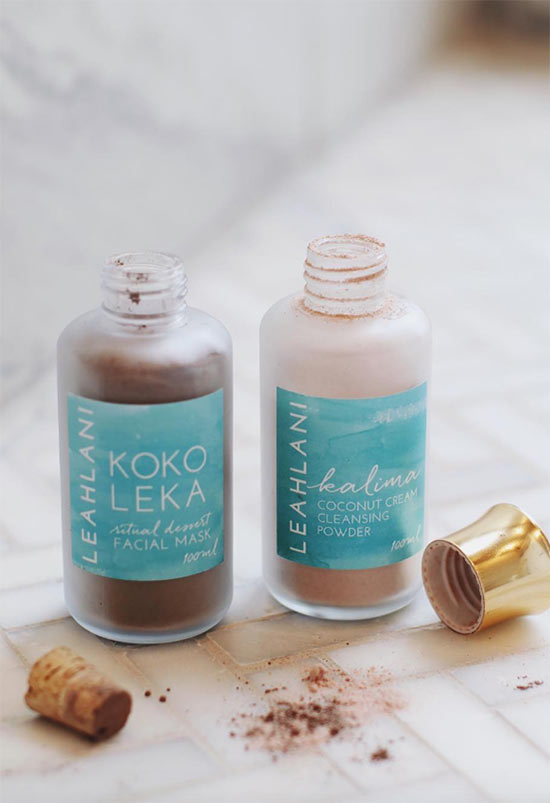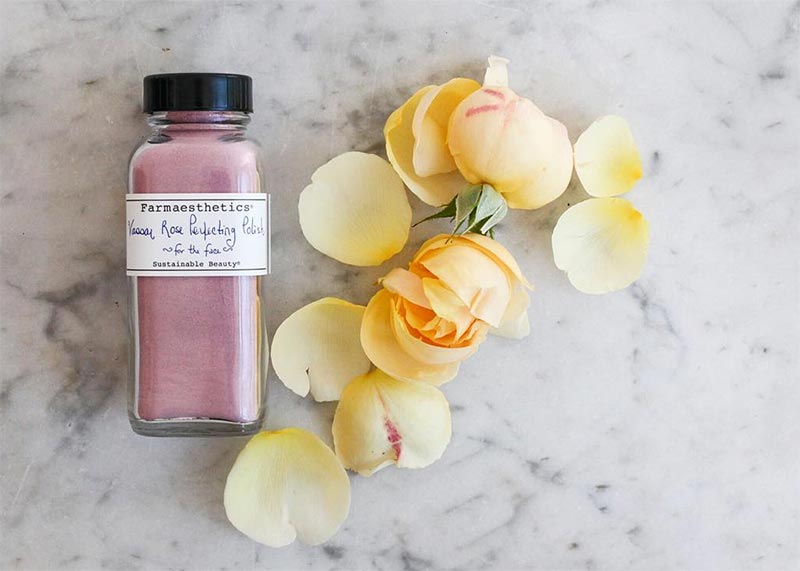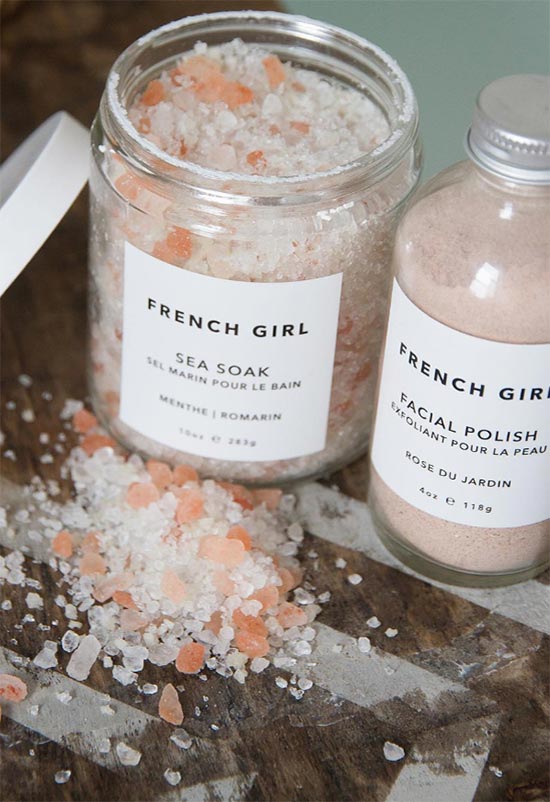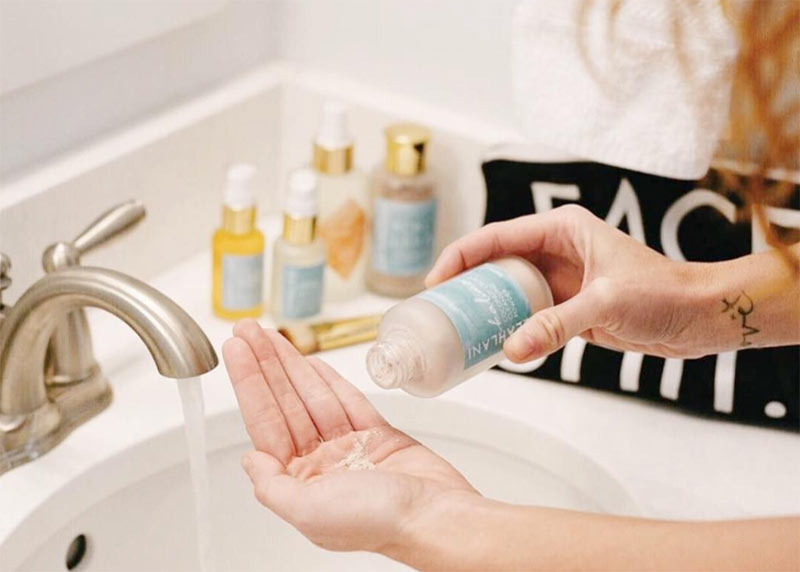I feel like dry scrubs turn my bi-weekly exfoliation habit into an adventure in which I get to become my own chemist, while powder cleansers are great for frequent travelers that don’t want to get bogged down with liquids. If you’re considering switching over to #teampowder, then I’m here to help! I’ll make sure you fully understand what dry scrubs and powder cleansers are, how they work, their pros and cons, and what the best way to use them is. I’ve peppered the whole article with quite a few tips, so that you can get dry scrubbing.
In this article:
- What Are Powder Cleansers & Dry Scrubs?
- How Are Dry Scrubs Different from Traditional Scrubs?
- What Should You Mix Your Dry Scrub or Powder Cleanser with?
- Pros & Cons of Powder Cleansers and Dry Scrubs
- How to Use Powder Cleanser?
- How to Use Dry Scrub?
What Are Powder Cleansers & Dry Scrubs?
Powder cleansers and powder exfoliants are the next great thing in the skin care world. They come in a form of a powder, and are meant to be mixed with a liquid right before they are applied to the skin in order to either cleanser it, exfoliate it, or both.
I’ll start by explaining facial cleansing powder, which is the more complex powder product. Powder face wash is basically a cleanser in powder form. Once blended with water, it forms into a paste that can be used to cleanse the skin and remove makeup, sunscreen, sweat, dirt, oils, and other debris.
Cleansing powders are usually made with a dry cleansing agent like sodium cocoyl glutamate or sodium lauroyl glutamate, along with other powders that hold some benefit to the skin. Traditional cleansers normally already have water in them, so in a way cleansing powders are like concentrated cleansers.
Next there are dry scrubs. These are abrasive powders that are normally made of some sort of finely milled ingredient, like rice, clay, or dry beans. Dry scrubs can be combined with water as well as other things like oils or cleansers. As the dry scrub is rubbed against the skin, it removes build-up of dead skin cells and polishes the skin so it feels smoother and softer.
A lot of facial cleansing powders also contain an abrasive element so they end up being both cleansing powders and powder exfoliants. In that case it is usually best to only blend them with water.

How Are Dry Scrubs Different from Traditional Scrubs?
While a traditional face scrub is some sort of abrasive powder dispersed in a gel formula, dry scrubs are just the abrasive powder. The idea is that the user can take the dry scrub and mix it with the medium of their choice: water, cleanser, oil, or anything else they might have in mind. Then they can apply the dry scrub to their skin, and get a perfect exfoliation.
Dry scrubs tend to have a finer texture that is more gentle on the skin, so they are a better choice for those with sensitive skin. This kind of texture is harder to achieve with traditional face scrubs, since in order for the abrasive pieces to be so small and still exfoliate properly the ratio of liquid/ cream to abrasive has to be about equal. This makes for a product that would be very hard to squeeze out of a tube, while in a jar it would dry up very quickly.
What Should You Mix Your Dry Scrub or Powder Cleanser with?
To cleanse with your dry scrub or powder cleanser, you should combine it with any of the liquids mentioned below.
Water
Water is the simplest choice, since it is easy to find just about anywhere, and it won’t cause issues with anyone’s skin. When it comes to powder face wash, water is usually the only liquid that will create a lather and turn your powder cleanser into a proper paste. With dry scrubs there is more leeway, but water is always a fine choice.
Toner
Your toner could also work as a mixer for your powder face wash or dry scrub. Since toners are as liquid-y as water, they will give you a paste with a similar texture, but they will also provide your skin with their own unique benefits. This can be a great way of cutting out the toning step from your routine, and still enjoying the balancing, hydrating and skin-tightening effect of your toner.
Cleanser
There isn’t a lot of sense in combining your cleanser with a cleansing powder, but it’s a great mixer for your dry exfoliant! This is another great way of cutting steps out of your skin care routine, and still getting the full benefits of your products.
Feel free to do this if all you’re getting rid of is some light debris and excess oil, but I generally recommend not jumping straight to exfoliation if you have been wearing a full face of makeup or if your skin has gotten seriously dirty.
Oil
If your skin is on the dry or dehydrated side, then oil is a great medium for using your dry scrub. Adding oil will make your exfoliation process more nourishing to the skin, as botanical oils contain a host of skin-healing and replenishing ingredients. It will give your skin the softest texture possible.
You can try any skin care oil, including coconut oil for dry and sensitive skin, rosehip oil for hyperpigmentation, or grape seed oil if your skin is acne-prone.

Honey
Adding honey to your dry exfoliant is a great way of getting a dose of moisture with your exfoliation. Honey has the ability to pull moisture into the skin, and it also presents some skin-healing and antibacterial properties, so it can work for any skin type.
By mixing it with your dry scrub and leaving it on the skin for a few moments you can give your skin a fortifying skin treatment. This is especially wonderful to do in the bath or shower when the air is super saturated with water.
Pros & Cons of Powder Cleansers and Dry Scrubs
Whether it’s really worth ditching your traditional cleansers and investing in the powder options depends on the pros and cons of these products, which we discuss below.
Pros
- Dry scrubs and powder cleansers are really fun to use. They allow you to play around and feel like a chemist, which makes the whole skin care regiment much more exciting!
- Since liquids are not allowed on airplanes, powder exfoliants and cleansing powders are a great alternative to traditional gel formulas that is easy to travel with. Since they are concentrated, they take up less space, and there is no issue bringing them on an airplane.
- Dry scrubs allow you to adjust your exfoliation ingredients based on your skin condition at any given time. So if you’re feeling dry, you can use honey or an oil, while if you need a stronger exfoliation you can use less of the mixing medium.
- In skin care, it is the mixture of water and other ingredients that requires all kinds of preservatives, some of which are thought to be harmful and are generally shunned by the natural cosmetics community. Since dry scrubs and powder face washes are free of water, they don’t require preservatives and they tend to have much more natural formulas.
Cons
- Some people find that dry scrubs and powder cleansers can be a little messy, although for others it’s not an issue. You may want to consider how clumsy you are before trying them out.
- Powder cleansers tend to have a higher pH than creamy cleansers, so using a pH-adjusting toner after cleansing is mandatory, in order to keep the skin’s acid mantle healthy and balanced.
- Facial cleansing powders are usually on par with foaming and gel cleansers, so they’re not always the best choice for removing heavy makeup, especially around the eyes.
- Since dry scrubs tend to have a much smoother texture than traditional scrubs, it’s easy to forget how well they exfoliate. Be careful not to over-exfoliate your skin, and don’t use them more than 4 times a week!

How to Use Powder Cleanser?
This information applies to both exfoliating powder cleansers and non-exfoliating ones. If your powder cleansers of choice are non-exfoliating, you can use them every day. If they do have an exfoliating effect, only use them 2-4 times a week.
- Wet Your Face
Begin by dampening your face. If you are wearing heavy makeup, you might want to use an oil or a makeup remover to remove it first.
- Pour Some Cleansing Powder into Your Palm
Pour out a small amount of the cleansing face wash you chose into your palm. You will need about ½ a teaspoon worth of product.
- Add a Few Drops of Water
In your palm add a few drops of water to your powder cleanser. Rub your hands together so that the cleanser can dissolve into a thick paste in the water. The paste may foam up slightly.
- Get the Right Consistency
If you feel like the paste is too thick, add a few more drops of water until it reaches a consistency you like.
- Massage Your Face with the Paste
Using circular, upward motions gently massage the cleanser into your skin, allowing it to dissolve impurities. Some brands may recommend massaging up to a minute, although that can be irritating to the skin. 10-15 seconds is more than enough for most people.
- Rinse Your Face
Once all debris has been broken down, rinse your face with cool or lukewarm water. If you feel like that’s not enough, you can use a damp face cloth to properly remove the rest of the cleanser.
- Apply a Toner
Since powder facial cleansers tend to be somewhat alkaline, apply a pH-adjusting toner to your skin with a cotton pad.
- Finish It off
Finish the rest of your skincare routine, with your favorites essence, serum, or moisturizer. If it is daytime, make sure to also apply some sunscreen.
How to Use Dry Scrub?
Since dry scrubs can feel so gentle on the skin, people forget that they are still thorough exfoliants. It is better to use them, following these instructions, every other day at the most. Exfoliating the skin every day can seriously irritate it.

- Start with cleansed skin – you can even use one of the cleansing powders I’ve recommended to get it perfectly pristine!
- Either in your palm or in a bowl, combine your powder exfoliant of choice with your medium of choice. If it’s a dry scrub that foams up a bit, then toner or water is the better choice, although otherwise feel free to play around.
- Mix your dry scrub with whatever mixing medium you chose, so that it is evenly dispersed within it and has a pleasant texture that is not too thick or too thin.
- Using circular motions begin rubbing the exfoliant mixture into your skin. Don’t use too much pressure or massage for too long, as this can irritate the skin.
- If your dry scrub is not of the cleansing variety and does not contain surfactants, you can leave it on your skin for a few minutes as an impromptu mask.
- Remove the exfoliant. Just a splash of water is usually not enough, so you can time it with your shower or use a damp face cloth to remove everything.
- Finish off your skin care routine with a toner, serums, and a moisturizer. If you’ve exfoliated your skin in the daytime, then apply a product with at least 30 SPF.
Photos via @leahlaniskincare, Instagram





